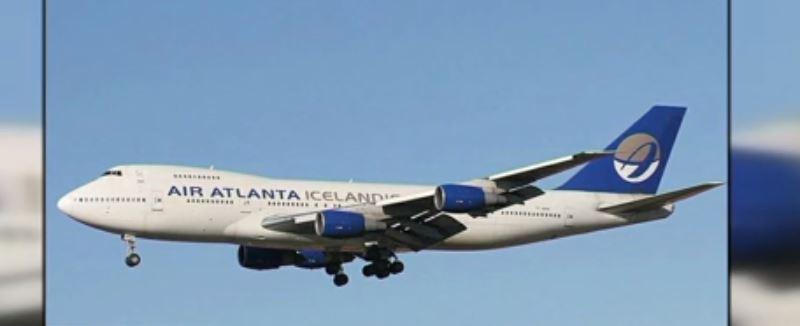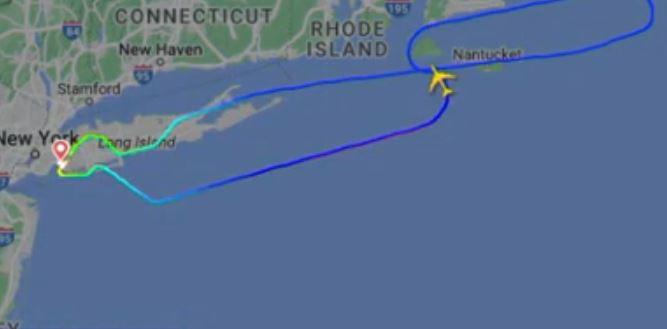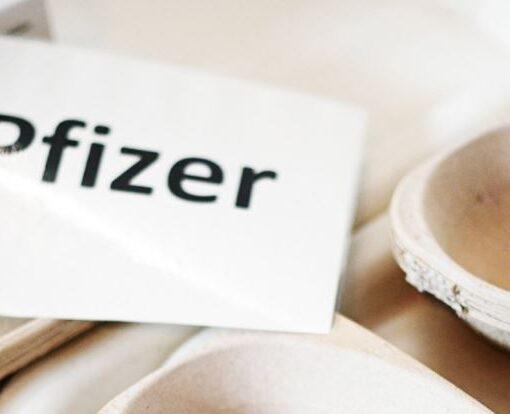
A Boeing 747 cargo jet, en route from New York JFK to Liege, Belgium, was forced to execute an unusual and unprecedented U-turn 90 minutes into its journey due to the escape of a horse from its stall at an altitude of 30,000 feet (9,144 meters).
The horse caused widespread destruction at that particular altitude. The escaped live animal, which was purportedly one of fifteen being transported to Liege, prompted the pilot to communicate with air traffic control as follows: “A live animal, specifically a horse, is present on board the aircraft. The equine ultimately escaped.
Highlights:
- Mid-Air Equine Escape: A routine cargo flight turned extraordinary when a horse, part of a consignment destined for Liege, broke loose mid-air, causing the aircraft to return to New York.
- Fuel Dump and Urgent Landing: The pilot, facing the challenge of an unrestrained horse, had to dump 20 tons of fuel over Nantucket to reduce the plane’s weight. The horse’s escape posed a unique danger, emphasizing the need for prompt action.
- Tragic Outcome: Despite efforts to secure the horse upon landing, it was determined that the injuries sustained during the escape were too severe. The animal had to be euthanized, shedding light on the potential risks associated with transporting live cargo.
- Unanswered Questions: The circumstances leading to the horse’s escape remain unclear, leaving many questions about the safety protocols in place for transporting live animals on cargo flights.
- Common Incidents, Uncommon Consequences: While animals escaping from cargo holds are not unheard of, this incident underscores the challenges faced by handlers and the unpredictability of transporting live cargo at high altitudes.
A cargo flight en route from JFK International Airport in New York to Liege, Belgium, deviated unexpectedly due to the unfolding chaos at an altitude of 30,000 feet.
An Air Atlanta Icelandic-operated Boeing 747 cargo jet encountered a puzzling circumstance when a live horse escaped from its stall, compelling the pilot to execute an immediate decision to reverse the aircraft.
The pilot notified air traffic control approximately 90 minutes into the flight, stating, “A live animal, a horse, has been discovered on board the aircraft.
The equine ultimately escaped. “We are unable to secure the horse’s return.” The pilot felt obligated to request permission to return to JFK Airport due to the critical nature of the situation.
He emphasized the importance of having a veterinarian meet the aircraft upon landing.

While returning to New York in the cargo plane, the pilot encountered an additional obstacle.
It was decided to dispose of 20 tons of fuel east of Nantucket as a result of the unanticipated weight distribution brought about by the loose horse.
This action was taken to emphasize the gravity of the situation by ensuring the aircraft’s safety during landing.
Upon arrival, endeavors were undertaken to apprehend the escaped equine, which was among a shipment of fifteen animals intended for Liege, Belgium.
Nevertheless, the situation tragically unfolded due to the unbearable severity of the injuries sustained during the escape.
The euthanasia of the horse brought an unfavorable conclusion to an exceptionally peculiar and difficult incident.
The occurrence illuminates the intricacies and hazards that are inherent in the transportation of live cargo via commercial flights.
Although instances of animals escaping from cargo holds are not unheard of, the repercussions of this equine escape in midair highlight the critical nature of reassessing safety protocols and precautions associated with the air transportation of living animals.
Air Atlanta Icelandic has not issued a formal statement concerning the incident, which leaves numerous inquiries unresolved concerning the specific safety protocols implemented for such transportation and the circumstances surrounding the horse’s escape.
The airline’s response will presumably be subject to rigorous examination by regulatory bodies and industry professionals in an effort to comprehend and resolve the difficulties presented by this unforeseen and rare incident.
The extent to which live animals are secured in cargo holds during air transport is called into question in light of the horse’s escape.
The occurrence underscores the intrinsic unpredictability associated with working with horses, which are flight animals capable of acting erratically in response to fear or surprise, thereby presenting difficulties for both handlers and crew members.
As per the statement of John Cuticelli, the corporate executive in charge of animal quarantine and export at JFK International Airport, the horse was startled shortly after takeoff due to turbulent conditions.
When the horse attempted to leap over the stall’s high front barrier, it became entangled with its hind legs on the other side and its front legs on the other.
Flight grooms were rendered virtually incapable of intervening successfully due to the intricacies of loading horses into stacked, dead-bolted shipping containers and the difficulty of rescuing the horse midair.
Notwithstanding the lamentable consequence, the occurrence emphasizes the criticality of implementing comprehensive safety procedures when transporting living cargo, particularly horses that are sizable and capricious.
As a consequence of this midair escape, aviation authorities and specialists may reassess and enforce stricter regulations pertaining to the air transportation of living animals.
The escaped horse’s unfortunate demise also prompts inquiries regarding the essentiality and efficacy of safety protocols implemented during the transportation of animals on commercial flights.
Although the exact function of these transports is unknown, industry professionals speculate that racehorses are frequently moved in them. The occurrence necessitates a more thorough evaluation of the procedures and conditions that govern the safety and security of live cargo during air travel.
As the inquiry into the occurrence progresses, the aviation sector is confronted with the difficulty of minimizing the hazards linked to the transportation of living creatures, taking into account the potential disruption to flight operations and the well-being of the animals.
This unanticipated and lamentable occurrence serves as a poignant reminder of the distinct difficulties presented by the transportation of live cargo. It urges the industry to place safety first and establish clearly defined protocols in order to avert subsequent occurrences of this nature.
FAQs:
Q1: Why did the horse have to be euthanized? A1: The horse suffered severe injuries during its escape, making euthanasia the only humane option, as confirmed by sources familiar with the incident.
Q2: How common are animal escapes on planes? A2: While incidents of animals escaping during flights are reported periodically, the severity of consequences in this case makes it stand out.
Q3: What safety measures are in place for transporting live cargo? A3: The specifics of safety protocols for transporting live animals on cargo flights are yet to be detailed, raising concerns about the effectiveness of current practices.




